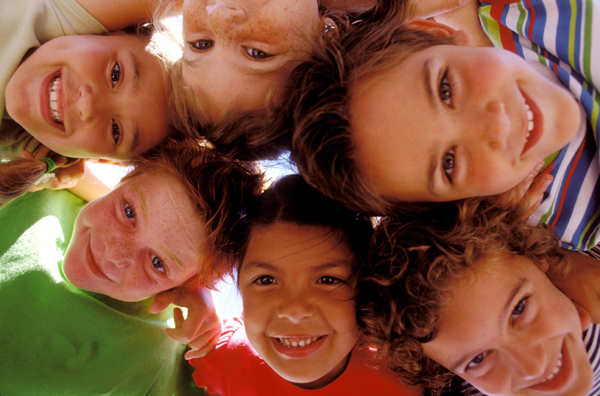
We know that one of the noticeable changes as children move into the Second Plane of development is their new interest in social settings and groups. Montessori teachers support this engagement by offering more opportunities for small groups of learners to work together and for inspiring lessons that include large-scale, multiday, group engagement. Visitors often note the difference in noise and visible activity in the Elementary classrooms. It's as though learners have shed the quiet, singular focus of Early Childhood in exchange for louder, more kinetic learning.
And with this new interest in socialization come new opportunities to experiment and explore social rules. Children's preoccupation with what their friends are doing can be both exciting and overwhelming. The freedom to interact and the freedom from interruption take on a new influence now. Younger children enjoyed this freedom as a balance to their intellectual growth, providing boundaries for attention, concentration and the society by cohesion. Children in Elementary need these freedoms (and protections!) in order to learn to regulate their new fascination with the influence of their peers.
Montessori teachers know to prepare for this development in the design of their classrooms. You'll see furniture choices that allow multiple children to hover over shared word at the same time: larger tables and open spaces on the floor for expansive lessons around which groups of children can gather. You'll see students taking more leadership in presenting lessons to to each other. You'll see students eagerly solving problems with each other before engaging the support of a teacher. While those solutions might not be the most elegant, they are far more relevant and rewarding to the learners. You'll see Montessori teachers aware of the ways in which children's cultural, gender and individual preferences influence their motivation and comfort with social engagement, and you'll see teachers meeting those differences with equally relevant ways to contribute meaningfully to the group.
But you'll also see a new attention by teachers to the nuances and complexities of this stage of development. You'll see quiet spaces withdrawn from the classroom for children to find some solace. You'll see teachers engaged in private conversation with one or two children at a time, so quietly that no one else notices that the teacher is even involved in resolving a conflict. You'll see teachers finding positions of influence for learners who are less comfortable in the spotlight, and more lessons in grace and courtesy that involve including other children. Because just as this is a time when children are more interested in the involvement of their peers, they may not have yet mastered how to be involved or how to manage the rough spots when lots of human are engaged in the same activity as once. Learning to navigate this social space diplomatically becomes a priority in the classroom, with the teacher determining how to integrate learners' academic goals while foregrounding social ones. We don't fight against children's need to interact with each other, nor do we penalize the children for whom that interaction is more tiresome. Instead, we seek to prepare environments that balance children's burgeoning social savvy with chances to step back, observe and reflect, understanding that, while children in the Second Plane can look and speak as though they're grown, the classroom still needs to be a place in which they can sometimes be small.
#SecondPlane #Freedom #Elementary #ForParents #ForTeachers #Theory #Socialization
